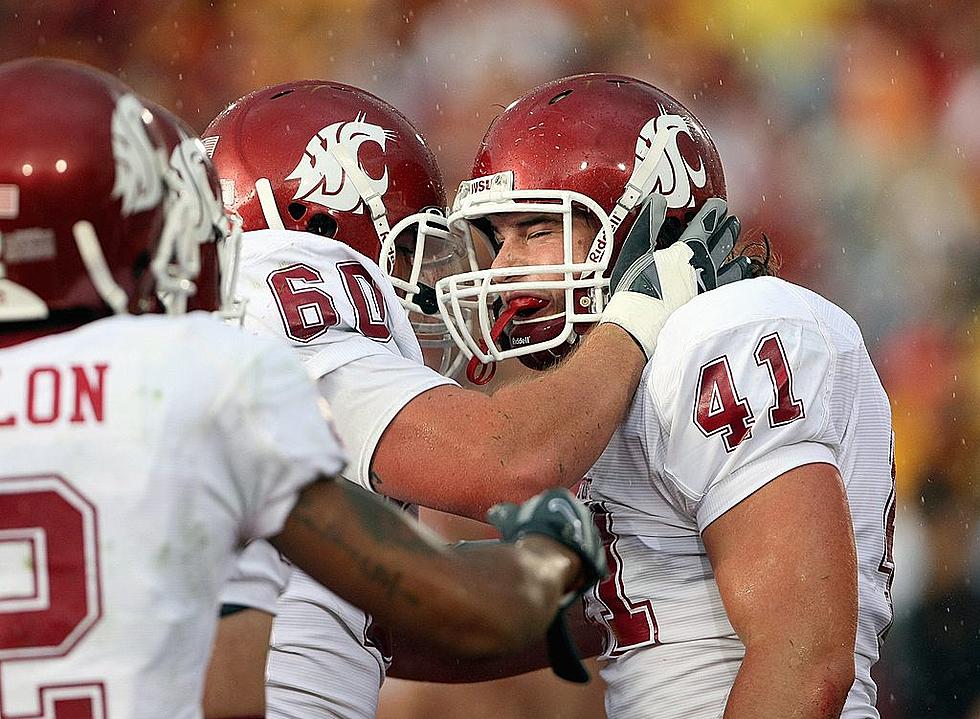![See the Wildest Olympic Sport You Never Saw in London [VIDEO]](http://townsquare.media/site/136/files/2012/08/hammer-throw-001-300x218.jpg?w=980&q=75)
See the Wildest Olympic Sport You Never Saw in London [VIDEO]
Every four years I geek out over an event most Americans are probably not familiar with.
How many of you know what the hammer throw is? It has nothing to do with tossing tools, although the sport has its roots in the Scottish games where competitors tossed a sledge hammer. Unless you poured over the online footage, you probably didn't see it on NBC. I looked and I didn't. It was not included in what they call their "main feed" of track and field.
They can show horse jumping, but not what John Blanchette of the Spokesman Review called "The Violent Side of Track and Field."
After growing bored with playing on .500 or worse football teams at Whitworth College (a little NCAA Division III school in Spokane) I was talked into taking up the hammer throw. It's the perfect event for folks who may not be big like a shotputter or tall and rangy like a discus thrower, or have a cannon arm like a javelin thrower. The world record holder is Yuriy Sedykh of Russia. He was only 6'1" and weighed between 235-40 lbs. during his peak competitive years.
Other than pole vault, it is considered the most difficult event to learn in track and field. By the time the thrower is ready to release the hammer, they experience nearly 1,000 lbs. of centrifugal force (for world class throwers). Unlike the shot put, or discus, it's less about brute strength than speed and technique. The speed generated by today's throwers is nothing short of unbelievable! The sport was originally dominated by Americans, but as the Soviet Union grew in power in the 1950s incredible resources were laid out to overtake the U.S., and eventually they did. Harold Connoly was the last American to win a gold back in the 1956 Olympics.
The American record set in 1996 by Lance Deal is 270' 6". That pales in comparison to the world record set by Sedykh in 1986. He threw 284' 7" -- the second-oldest track and field record of all time, and one that many think will never be broken. Kibwe Johnson was the leading U.S. thrower in the 2012 Olympic games in London. After qualifying fourth for the finals with a throw just over 253', he finished well out of medal contention, hitting 245' 8". Krisztian Pars of Hungary won the gold, throwing just over 264 feet.
Part of the reason this sport is so unnoticed is because only Rhode Island offers it as part of high school track and field. Because of its wild and, yes dangerous, possibilities plus a lack of suitable throwing areas and facilities, few athletes even pick it up until college. You can use a discus sector, or throwing area, for hammer, but you need a special cage in case you slip or stumble and it tears out of your hand.
Back to 1985-86 I did the five-year plan at Whitworth (don't ask why), and was lucky to spend two incredible years doing "the dance," as many throwers call it. My best marks in competition, if I remember, were in the low 170's, with 180-plus in practice. Not bad for essentially 18 months of serious training. And yes, that picture is yours truly competing at the 1986 National meet. I got to compete against a fellow in that meet named Christian Okoye from Asuza Pacific University, who would later go on to fame and fortune in the NFL as The Nigerian Nightmare for Kansas City. He was the Nigerian national champion and record holder in the hammer. Nice guy and scary BIG! He finished 2nd in the event AND won the shotput in the same meet.
At the NCAA meet I was, I think, 12th out of 16. I didn't win a medal, but at least I wasn't last. And every four years I feel like going on Craig's List to see if anyone has a hammer for sale. Hmmm!
Check out this video -- it shows a variety of men and women. Women's hammer was added a number of years ago. Men use a 16 lb. hammer and women a 12 lb. Current video from the 2012 London games is not yet available for legal download.
More From 870 AM KFLD









